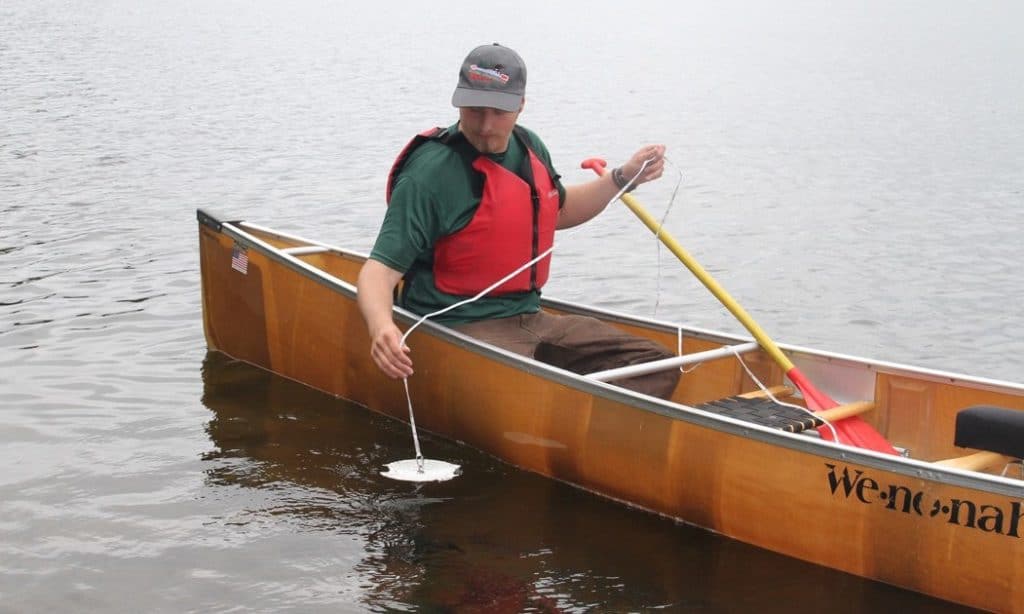
A program enlisting Boundary Waters paddlers in monitoring the health of lakes and streams in the wilderness has provided a wealth of information for scientists, and is continuing to grow.
The Boy Scouts of America’s Northern Tier High Adventure program, a large camp on Moose Lake outfitting young people from across America for wilderness trips, has been a leader in promoting the program. The organization was joined this year by Ely-area outfitters and Voyageur Outward Bound School.
While the Minnesota Pollution Control Agency works around the state to take water samples and otherwise keep an eye on water quality, some of the most beloved lakes in Minnesota are in the Boundary Waters, where gathering information is much more complicated.
“The BWCA is wild and remote – two things that make regular water monitoring a challenge,” the MPCA recently wrote in a newsletter. “In fact, very limited water quality data exists on lakes in the BWCA.”
That’s where wilderness paddlers come in. Organizations like the Boy Scouts can work with the MPCA to supply Boundary Waters visitors with Secchi discs. These simple, lightweight tools make it possible for anyone to measure how clear the water is, an important piece of information for measuring things like the amount of sediment and algae in a lake.
‘Rock star’ Boy Scouts
This year, Boy Scouts taking canoe trips through Northern Tier provided 481 observations of water clarity on lakes throughout the wilderness, according to an article in Scouting Magazine.
“Through this initiative, the Boy Scouts have proven to be rock star data collectors,” the MPCA wrote. “The sheer number of kids participating has led to thousands of data points collected on BWCA lakes over the years.
For completing the program, Scouts can earn a special “Lake Monitoring” badge.
Individual paddlers can participate without working through an outfitter or camp. The MPCA will send a Secchi disc and reporting form to anyone who requests one. The data and the tool are then sent back after the trip. Learn more on the MPCA website.
Supporting science, promoting preservation
As reported in the State of the Boundary Waters report earlier this year, the lakes in the Boundary Waters are some of the cleanest and healthiest in the state. Primarily using satellite imagery, scientists had estimated 100 percent of the wilderness’s lakes met water quality standards.
Real-world data can help verify such remote studies, improving efforts to track any future changes in the health of the water. Most lakes in the Boundary Waters are clear enough to see the Secchi disc as deep down as 10 to 30 feet, according to Scouting Magazine.
“Volunteer-collected data help the MPCA identify changing water quality trends on lakes in the Boundary Waters,” the agency writes. “Since volunteers collect some of the only data available on lakes in the BWCA, their work is an invaluable component to this process.”
Boundary Waters lakes, streams, and wetlands are seen as susceptible to several forces, including climate change, air pollution, and contamination from proposed copper mines.

